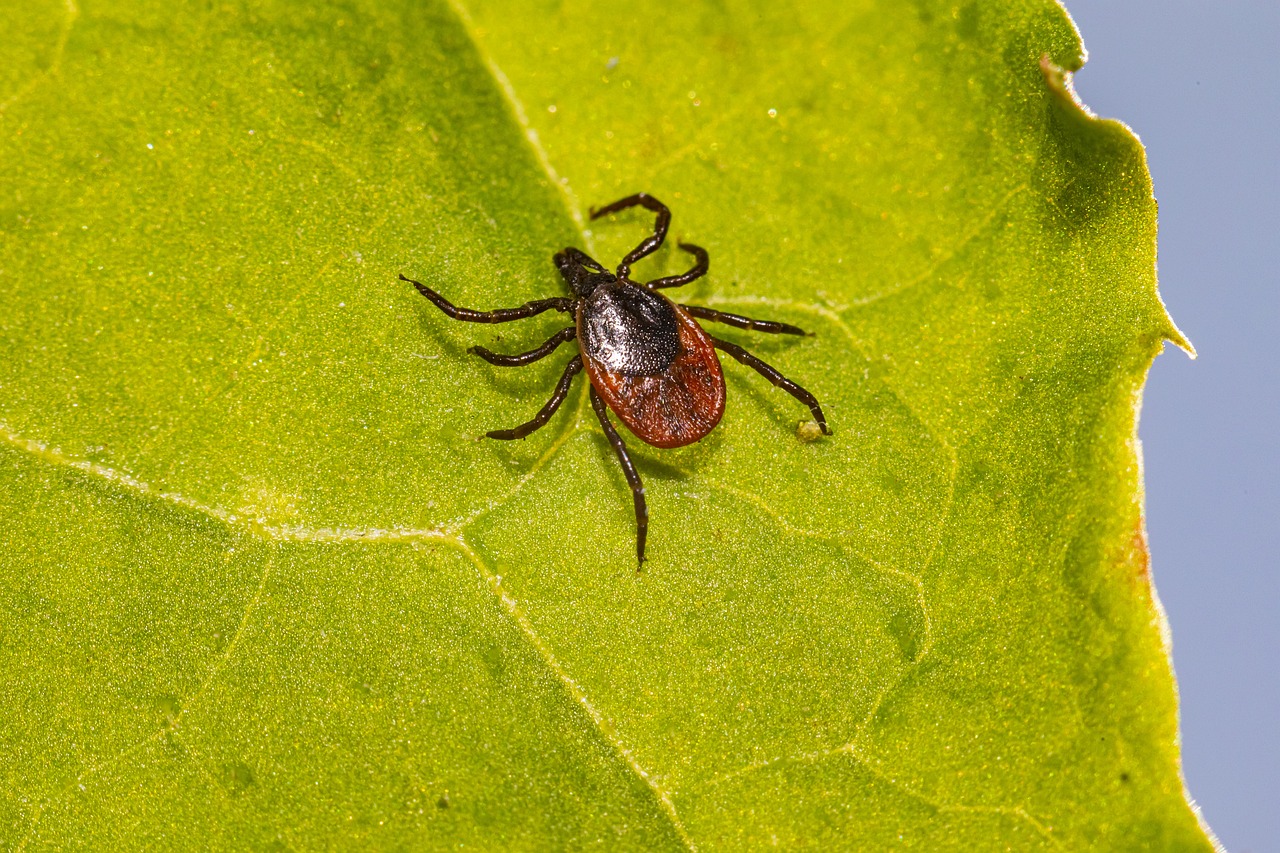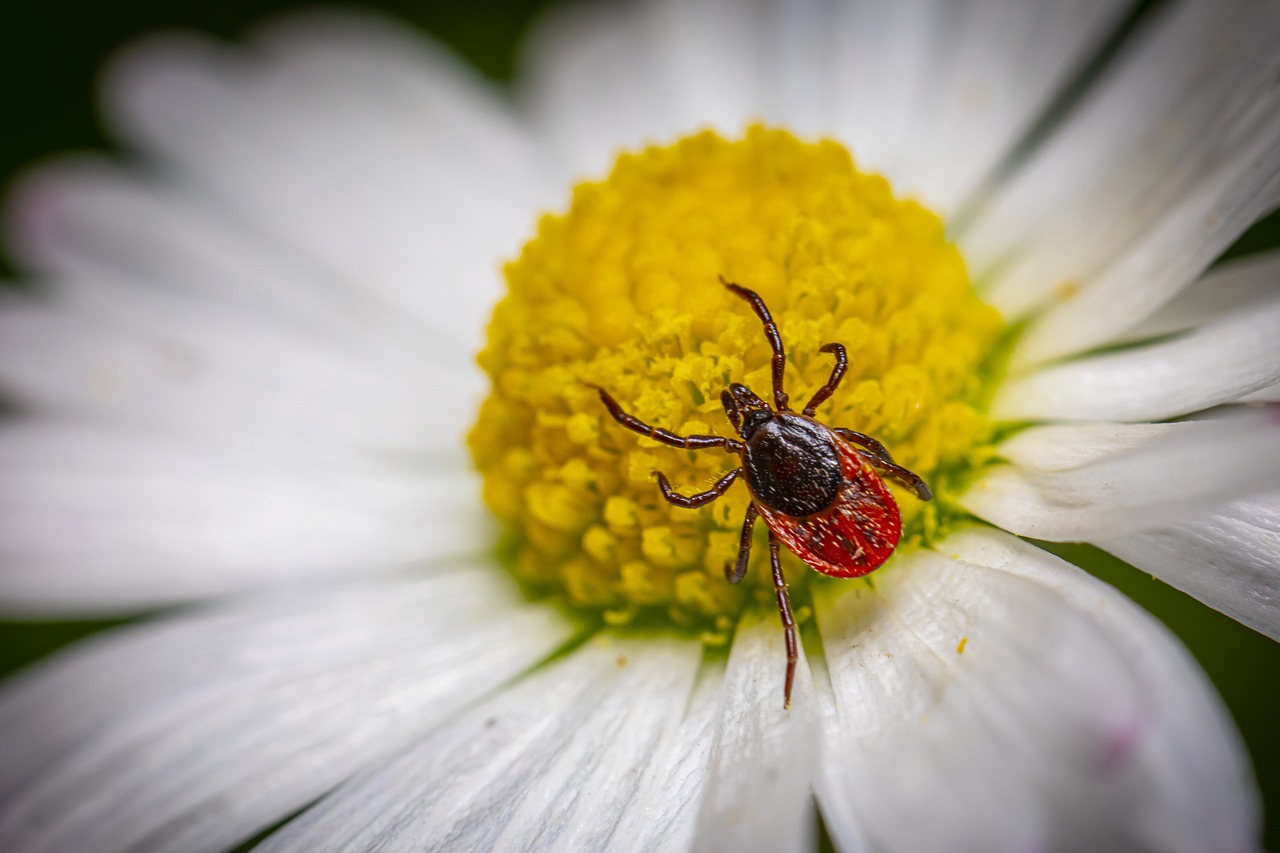Lyme disease is widespread in the Northern Hemisphere. Both children and adults can contract Lyme disease.
Borrelia burgdorferi – it is the bacterium that causes Lyme disease. The bacterium is transmitted by parasites called ticks. Various species of ticks project Lyme disease, and it usually ticks in the Ixodes ricinus species in Europe and the United States.
The symptoms of Lyme disease can be varied and similar to other conditions. Borrelia infection occurs due to a person being bitten by a tick. Sometimes, the person does not realize that the tick has bitten them. Disease symptoms appear later, which makes diagnosis much more difficult.
Ticks are arachnid parasites that feed by biting animals or humans. Ticks can carry bacteria, viruses, and protozoa that project various diseases. One such disease is Lyme disease. There are multiple species of ticks. Ixodes ricinus![]() ticks are most abundant in Europe but can be found worldwide. Ticks come in various sizes and colors. Their size is at most 0.5 inches.
ticks are most abundant in Europe but can be found worldwide. Ticks come in various sizes and colors. Their size is at most 0.5 inches.

Ticks use their acute senses to search for hosts. They react to the heat of the body, the smell of sweat, air movement, and ground vibrations. It helps them recognize people and animals. There is a myth that ticks mostly fall on us from trees. It is false because ticks cannot sense their hosts from long distances and target their fall on them.
Much more often, ticks climb the body from grasses, bushes, or small trees. Thus, the easiest way to catch ticks is by tearing through plants. Ticks tend to bite into delicate and thin skin. It is best to check the whole body, paying particular attention to the scalp. A tick bite does not hurt, so it is impossible to feel it immediately.

Playing outdoors can carry the risk of catching a tick. Experts have long advised people to watch out for ticks during walks and to check their children when they return home. Here's a list of places where ticks are most common:
Ticks are generally found where there is lush vegetation. The more shrubs, trees, and tall grass – the better the conditions for ticks![]() . When you come in contact with flora, it is better to check your body when you return home. Activities such as lying on the grass, climbing trees, or hiding in bushes – it is a high risk of catching a tick. That's why it's common for children who enjoy this type of outdoor play.
. When you come in contact with flora, it is better to check your body when you return home. Activities such as lying on the grass, climbing trees, or hiding in bushes – it is a high risk of catching a tick. That's why it's common for children who enjoy this type of outdoor play.
Lyme disease is caused by a bacterial infection. The infection can occur in one particular way, which you can protect yourself from. However, once an infection occurs, Lyme disease develops with various symptoms.
Current research has proven that Lyme disease can be contracted in only one way. The Borrelia burgdorferi bacterium is found in the intestines of ticks. Infection, therefore, occurs only through a tick bite![]() . It is impossible to contract Lyme disease from a human.
. It is impossible to contract Lyme disease from a human.
Lyme disease is caused by sharing the tick's bacteria through the salivary glands and the penetration of the bacteria into the tissues. This process takes time and can take many hours before infection occurs. Only some people tick project this type of bacteria. But it is worth remembering that everyone beats bite can be dangerous for you. That's why seeing a doctor after a tick bite and even removal is necessary.
Lyme disease symptoms are various and can be diagnosed by specialists in multiple fields. Lyme disease can have characteristic symptoms that are essential warnings but do not always manifest themselves. It is good to know all the signs that indicate Lyme disease. The most important thing, however, is prevention – checking your body after spending time outdoors.

Lyme disease symptoms:
The most common Lyme disease symptom disease is erythema![]() . It appears at the site of the tick bite. The redness is ring-shaped and can clear itself a few days after the bite. However, the erythema does not always appear. Many people infected with Boleriosis do not notice this characteristic symptom in themselves. Therefore, be on the lookout for additional worrisome symptoms.
. It appears at the site of the tick bite. The redness is ring-shaped and can clear itself a few days after the bite. However, the erythema does not always appear. Many people infected with Boleriosis do not notice this characteristic symptom in themselves. Therefore, be on the lookout for additional worrisome symptoms.
Other symptoms may resemble different diseases, even if it is a common cold. They are called flu-like symptoms![]() . Body temperature may be higher, even feverish. Chills may be present. A nagging pain contributes to malaise and fatigue.
. Body temperature may be higher, even feverish. Chills may be present. A nagging pain contributes to malaise and fatigue.
A symptom that should not be ignored is neurological problems![]() . This is because Lyme disease can also affect brain function. Infected people may experience strange phenomena related to facial muscles – tingling, numbness, lack of feeling in the muscles, and drooping of the corners of the mouth. Acute headaches and dizziness may occur. Also, visual field disturbance and maya can be neurological symptoms of Lyme disease infection.
. This is because Lyme disease can also affect brain function. Infected people may experience strange phenomena related to facial muscles – tingling, numbness, lack of feeling in the muscles, and drooping of the corners of the mouth. Acute headaches and dizziness may occur. Also, visual field disturbance and maya can be neurological symptoms of Lyme disease infection.
Another characteristic symptom is lymphoma![]() . There is a small risk of swollen lymph nodes with Lyme disease infection, but it is possible. This rare symptom occurs in the form of a tumor on the body. The cancer is non-painful and reddened.
. There is a small risk of swollen lymph nodes with Lyme disease infection, but it is possible. This rare symptom occurs in the form of a tumor on the body. The cancer is non-painful and reddened.
Lyme disease is a complex disease to detect because it has a variety of symptoms that can suggest different diseases. However, the most characteristic symptom – erythema – is an indicator of the presence of infection. It is a specific disease symptom that does not appear in different cases. However, erythema does not always occur. Therefore, doctors also order blood tests to detect the presence of the bacteria.
Laboratory diagnosis of Lyme disease is based on serological tests![]() . However, tests to catch Lyme disease need to be more accurate. The results can be wrong, which is a challenge for doctors. Doctors analyze the situation and order appropriate treatment based on the tests and observation of all symptoms.
. However, tests to catch Lyme disease need to be more accurate. The results can be wrong, which is a challenge for doctors. Doctors analyze the situation and order appropriate treatment based on the tests and observation of all symptoms.
Most often, patients with possible Lyme disease are treated with antibiotics. When the treatment process does not work, it may indicate a different disease or chronic form of Lyme disease. But even a tiny possibility of Lyme disease infection requires the implementation of a treatment process. Thus, this is because time is of the essence in Lyme disease infection. Lyme Disease is completely curable if the patient reacts early enough and starts treatment.
The effectiveness of Lyme disease treatment depends on what phase the infection was detected. In the first phase of the disease, doctors order antibiotic therapy, which has high effectiveness. In contrast, the treatment of developed Lyme Disease is much more complex, and some people's resistance to antibiotic drugs also makes treatment problematic. Therefore, what treatment to order for the patient mostly depends on the stage of Lyme disease.

Lyme disease can be divided into three stages![]() . Each stage is distinguished by the presence of various symptoms and complications. The spread of the bacteria indicates a particular stage. The earlier the stage, the easier it is to cure Lyme disease.
. Each stage is distinguished by the presence of various symptoms and complications. The spread of the bacteria indicates a particular stage. The earlier the stage, the easier it is to cure Lyme disease.
There are the first symptoms, such as erythema, fever, and fatigue. It is the first days and weeks after the bite. It is a problem where Lyme Disease is asymptomatic during this period. Early Lyme disease gives flu-like symptoms. An essential diagnostic indicator of Lyme disease is to determine when and where the bite may have occurred. Patients are usually asked about recent activity during the interview. If they have had contact with nature, Lyme disease infection is possible. Treatment in the early stages is short-term and it lasts about two-four weeks.
When several weeks or months pass after a tick bite, Lyme develops. Joint and muscle pains appear at this stage, and symptoms become more troublesome as multiple infections and inflammation occur. Neurological complaints may appear. Curing the disease with antibiotics is still possible and practical at this stage. But some patients require different treatment approaches.
Untreated Lyme disease has a very damaging effect on the body. The inflammation that arose earlier turns into a chronic form. Thus, it happens because Lyme Disease weakens the immune system. More neurological problems appear, and inflammation of the brain progresses. Sensory, concentration, memory, and mood disorders occur. There may even be a personality change. Patients may be hypersensitive to visual and auditory stimuli. Heart problems often occur.
At a late stage, therapy must be long-term and multi-drug. There are various treatments for persistent Lyme disease, and the American Society of Infectious Diseases recognizes Lyme disease syndrome, which recommends using drugs to relieve symptoms. Even in its late stage, Lyme disease is treatable but much more complex and time-consuming. There are also additional problems associated with multiple inflammations in chronic form, with which patients may struggle even for the rest of their lives.

Correctly diagnosing Lyme disease is a complicated process. A tick bite can easily be overlooked because painful symptoms do not accompany it. Only erythema may occur, but not always. The early stage may be asymptomatic. On the other hand, later symptoms are thus diverse and non-specific that they may suggest different diseases.
Therefore, there are cases where people do not recognize the infection for months. They notice numerous symptoms that greatly hinder their functioning but fail to recognize the cause. Many health problems![]() can appear in late Lyme disease. These include:
can appear in late Lyme disease. These include:
Atrophic dermatitis – it is a typical result of untreated Lyme disease. Skin lesions appear on the arms, legs, trunk, or face—the appearance of erythema precedes atrophic dermatitis. Later, bluish-reddish discoloration, patches, and swelling occur. The lesions continue to enlarge, the skin begins to wrinkle. Noticing atrophic dermatitis is enough to make a diagnosis of Lyme disease. However, it requires additional treatment.
Chronic pain and fatigue – as Lyme disease progresses, the sensations of pain and fatigue become more and more troublesome. Fatigue is so severe that it prevents people from functioning correctly. These symptoms can also be confusing and non-specific, as fatigue sensations occur with various types of disease.
Encephalitis – is a viral disease of the central nervous system. This is when flu-like symptoms intensify. Fever and headaches can cause vomiting. Lyme disease can cause various conditions related to the nervous system, ranging from paralysis of single peripheral nerves and meningitis to encephalomyelitis.
Arthritis – can appear as early as the disseminated Lyme stage. Patients notice pain, swelling, and stiffness in the joint area. It limits mobility and causes joint deformities. It is the most common of the clinical symptoms of Lyme disease.
Myocarditis – untreated Lyme disease can cause heart problems. Patients usually notice chest pain and heart arrhythmia. In the late stage, heart failure may develop. The causes of this type of inflammation can be various. It does not include only Lyme disease, which makes correct diagnosis difficult.
Conjunctivitis – problems with the organ of vision can occur in the disseminated Lyme stage. Conjunctivitis causes red and watery eyes. The eyes burn and hurt. Vision is impaired, and there may be a mucopurulent discharge that sticks to the eyes. In addition, retinitis and iritis of the eyes also occur with untreated Lyme disease.

As we mentioned, Lyme disease often attacks the brain, and Lyme bacteria can occupy the nervous system, causing much damage. It takes at least a month after a tick bite for this type of prevalence of infection to occur.
Neuroborreliosis![]() is a typical result of untreated Lyme disease. This is when Lyme disease takes on a character in which changes occur in the structures of the central and peripheral nervous systems. Its course can resemble illnesses related to the nervous system, such as depression, neurosis, and multiple sclerosis.
is a typical result of untreated Lyme disease. This is when Lyme disease takes on a character in which changes occur in the structures of the central and peripheral nervous systems. Its course can resemble illnesses related to the nervous system, such as depression, neurosis, and multiple sclerosis.
Symptoms of Neuroborreliosis:
Neuroborreliosis to Lyme disease causes encephalitis and other nervous system disorders. Untreated Lyme disease can cause Bannwarth syndrome, characterized by multiple inflammations within the brain. When Neuroborreliosis goes untreated for years, it can even cause paresis, psychosis, and mental disorders.
Prevention is significant because of the problems in diagnosing and treating Lyme disease. Education about preventive measures against Lyme disease is essential because it can protect people from infection. Unfortunately, there is no vaccine for Lyme Disease. On the other hand, specialists recommend following these anti-lyme rules.

Clothes that cover the body – if you go to the forest, park, or natural environment, dress appropriately. It is best to pick clothes that cover your legs and arms, protecting you from ticks attaching to your body.
Chemicals against ticks – in summer, however, it is more common to wear revealing clothing due to the high temperatures. Then, for protection, you can arm yourself with tick repellents sprayed on visible parts of the body. Be careful, however, as they contain harmful chemicals, so they are not for young children.
Checking your body – when you return from the outdoors, it's a good idea to inspect your entire body area. Ticks usually attach to the scalp, groin, or the skin behind the ears. It is better to check that no ticks have picked us for food.
Removing the tick – when you find a tick, you should remove it immediately. You must do it carefully, without crushing the tick, as it can release bacteria. It would be best if you effectively removed it from the body.
Observe the bite site – over the next few days, observe if erythema appears at the tick bite site. If the slight redness disappeared entirely after a few days, it was likely just an allergic reaction to the bite and no Borrelia infection. But if the erythema increases, go to a doctor as soon as possible.
Lyme disease is an infectious disease transmitted by ticks. Ticks, most commonly Ixodes ricinus and Ixodes persulcatus species, project the bacterium between various hosts, which are wild animals or humans. The easiest way to recognize Lyme disease is by noticing a characteristic symptom – ring-shaped erythema. But the symptoms of the disease can be very varied and ambiguous, so diagnosis is difficult.
Lyme disease is entirely treatable, the most common treatment being antibiotic therapy. However, treatment is more complicated in the later stages of the disease. Often additional treatment is necessary, which includes reducing the intensity of symptoms. There are various Lyme disease courses, one of which is Neuroborreliosis when the nervous system is attacked. Medical experts recommend being cautious when outdoors because of the problems associated with Lyme disease.